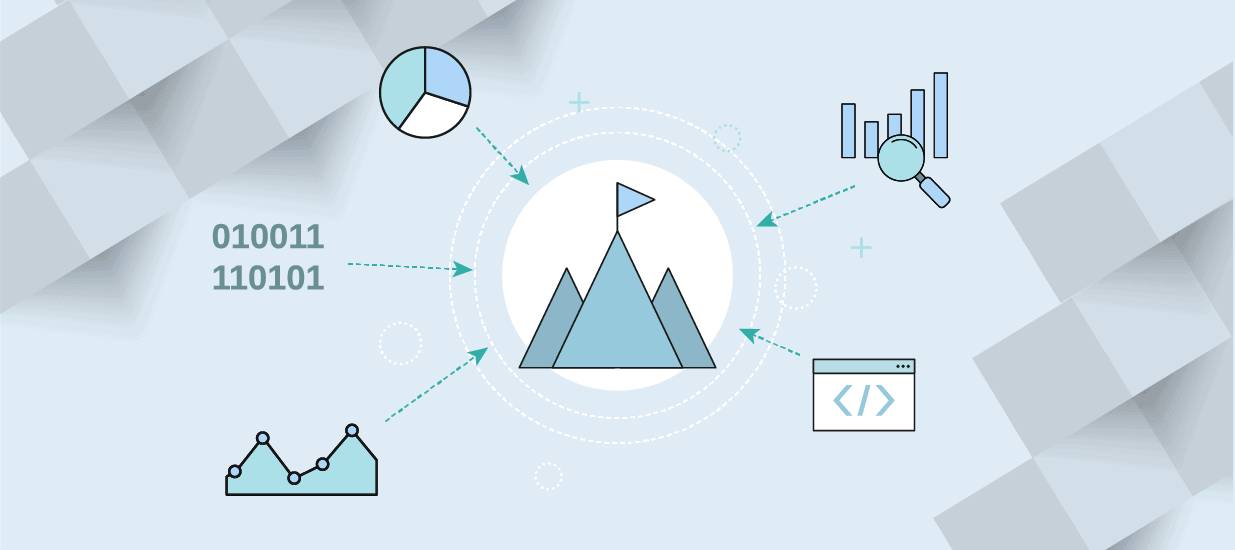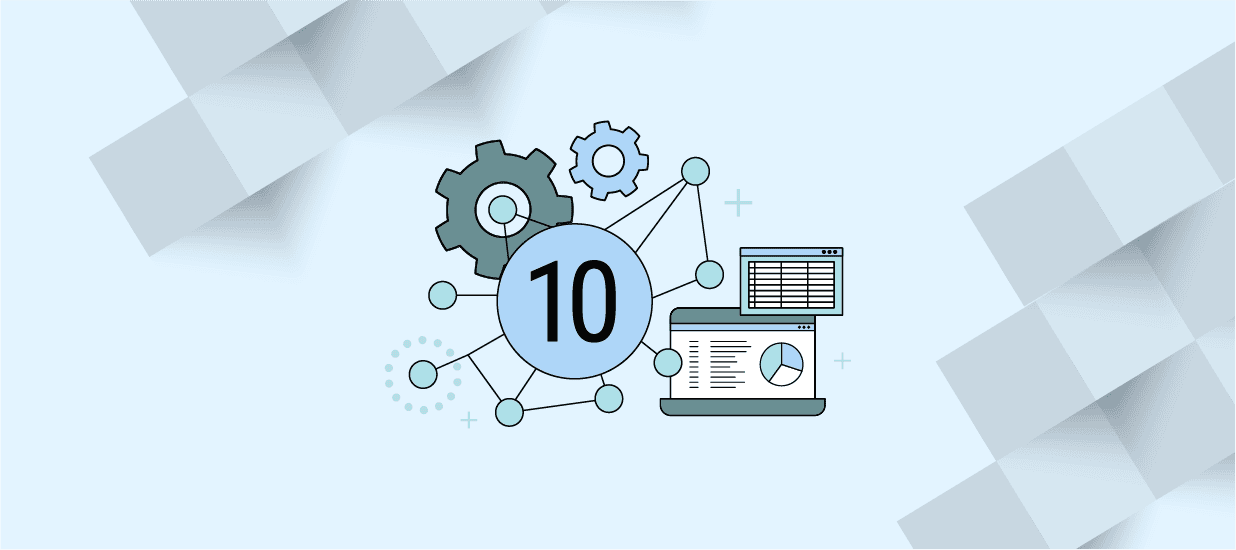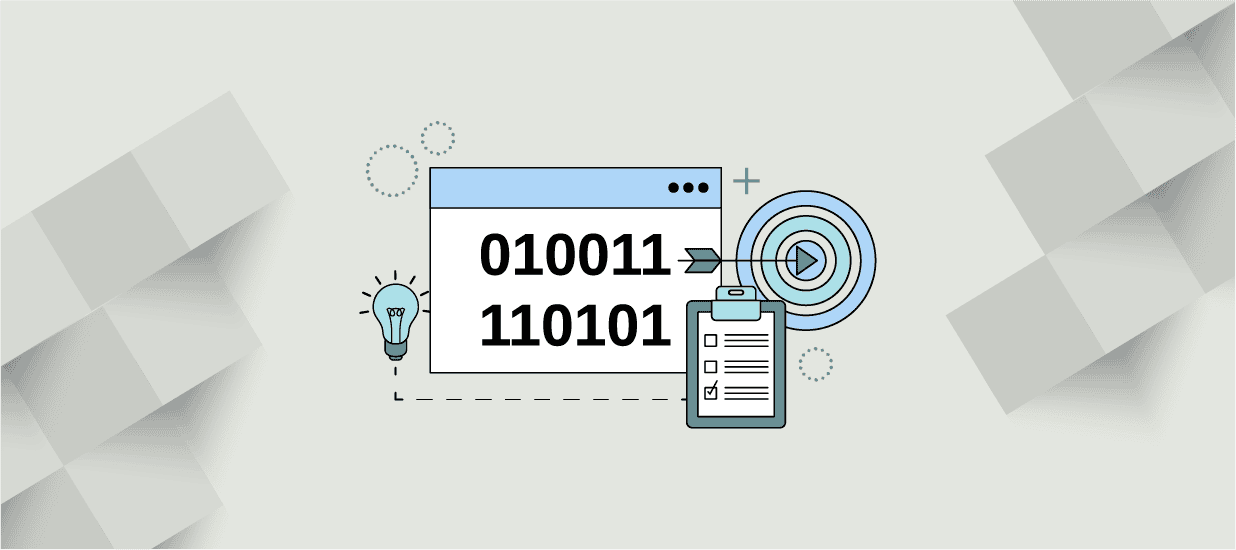7 minutes
Data can inform business decisions and fuel growth, but only if data projects and business objectives are working together. This article examines how to align data projects and business goals, along with ways to measure success.
The world runs on data and much of that data is leveraged by companies to help them make better decisions. And data-driven insights have proven invaluable for businesses, enabling them to save money and make more informed decisions. For example, UPS used AI, machine learning and logistics data to reduce labor hours while making operations more flexible and efficient.
There is virtually no limit on how data can be used in the business world. Organizations use it to do everything from sorting job applications to determining how to allocate resources. The real challenge isn’t necessarily how to get or use data but how to ensure that data projects align with business objectives.
The effective use of data is critical for success, making aligning data projects and business needs an absolute necessity in today’s environment. Unfortunately, getting aligned is more difficult than simply communicating goals across departments. Let’s look at some tactics for getting data projects and business goals aligned, as well as ways to measure the impact those projects are having.
Understanding Business Objectives
Business objectives are specific, measurable goals that a company aims to achieve to drive its growth and success. They serve as benchmarks for organizational performance and guide strategic planning, focusing efforts on targeted outcomes to maximize efficiency and profitability.
Identifying clear and achievable business objectives is the first step in initiating a data-driven project. The business objectives and goals you seek to support directly impact the data project you undertake. Some typical business goals data projects support include:
- Increasing revenue
- Reducing costs
- Improving customer satisfaction
- Enhancing operational efficiency and productivity
- Staying ahead of the competition
To help align your data project with these and other business objectives, start by following these steps:
- Analyze your organization’s current performance and challenges, examining key performance indicators (KPIs).
- Prioritize the results from step one, assessing their impact on business outcomes.
- Set benchmarks for your identified business objectives and KPIs, using gap analysis to identify shortcomings.
- Communicate your business objectives throughout the organization, ensuring all employees are aware of common goals.
Let’s look at how to identify KPIs and then how you can evaluate the importance of data projects to make sure you’re focused on areas that most strongly support business goals.
Identifying Key Performance Indicators (KPIs)
KPIs are essential metrics that measure progress toward achieving a business objective or goal. Choosing the right KPIs can help you identify which data projects will have the most significant impact on business goals. This will also allow you to determine the most appropriate metrics to measure.
For example, if increasing revenue is the goal, KPIs such as business value created or a specific metric increase would be relevant. For improving customer experience, KPIs like customer value enhancement would be suitable.
KPIs for data projects play several critical roles, including:
- Defining clear objectives, with KPIs like cycle time, resource utilization and error rate for operational efficiency projects
- Measuring outcomes to gauge performance
- Facilitating troubleshooting and enabling more straightforward implementation of changes
Examples of KPIs to assess data project performance include:
Increase in specific business metrics
- Ease of deploying models
- Data product usage
- Errors per unit/amount
- Increase in value to the customer
- Percentage of automated tasks
By aligning data projects with well-defined business objectives and KPIs, organizations can optimize their resources and ensure data initiatives have a meaningful impact on their operations and success.
Prioritization Frameworks
Prioritization frameworks assist in evaluating the relative importance of various data projects. This ensures that resources are directed towards projects most relevant to an organization’s needs. Two widely- used prioritization methods are the MoSCoW method and the ICE method.
MoSCoW Method
The MoSCoW method is a four-step approach to categorizing data projects based on their importance to your business. It stands for Must-have, Should-have, Could-have and Will-not-have.
Must-have: These are critical projects that must be completed
Should-have: These projects are important but not essential for immediate completion
Could-have: These projects are less important than “should-have” projects. To categorize them, consider the effect on the business if they were excluded. They are desirable but not vital
Will-not-have: These projects are neither important nor desired at the moment
Pros and Cons of the MoSCoW Method
The MoSCoW method offers benefits like resolving disputes and aligning priorities with stakeholders. However, it also has drawbacks, such as:
- Deciding which projects to classify as “will-not-have” can be challenging, potentially affecting the project’s overall success
- Prioritizing data projects within the same category may be difficult
- Subjective decision-making can lead to inefficiencies
ICE Scoring
The ICE method assigns a numerical value to projects based on their importance using three parameters: Impact, Confidence and Ease.
How to Use ICE Scoring
To calculate a project’s ICE score, consider three factors: impact, confidence and ease, each rated on a relative scale of 1-10.
- Impact: Measures the potential positive effect of your project on the key metric you’re trying to improve
- Confidence: Refers to the level of certainty about your estimates for impact and effort
- Ease: Estimates the amount of effort and resources required to implement your project
Pros and Cons of ICE Scoring
The ICE method is straightforward and facilitates quick prioritization. However, it also has limitations, including:
- The method is subjective, which can lead to inconsistent scoring and results. This is especially true when the same person evaluates a project at different times or when multiple people access the same project
- It allows room for bias which can potentially affect the final prioritization list
Both the MoSCoW and ICE methods offer valuable tools for prioritizing data projects. Understanding the pros and cons of each can help organizations select the most suitable method for their needs and ensure that resources are allocated effectively.
Consider the Business Impact
Measuring the impact of data-driven initiatives on your business is crucial, as it provides an objective understanding of your organization’s performance. One effective method to evaluate business impact is by calculating the return on investment (ROI).
ROI assesses an investment’s profitability and can help determine its worth and expected returns. Before calculating ROI, you must define “success” and identify how data projects have contributed to achieving it.
In addition to ROI, consider assessing the following factors:
Risk reduction: Evaluating risk reduction is vital for mitigating potential security breaches and compliance violations. Assessing risk reduction helps you understand the level of risk a data project may introduce to your organization.
Customer satisfaction: Quantifying the impact of data projects on customer satisfaction can provide valuable insights. This can be accomplished through focus group discussions or by analyzing customer behaviors and feedback.
Revenue growth: Assessing revenue growth helps determine the financial impact of your data projects. Key metrics include Revenue Growth Rate, Average Revenue per User (ARPU), Customer Acquisition Cost (CAC), and Net Profit.
Calculating ROI and considering risk reduction, customer satisfaction and revenue growth will provide a comprehensive assessment of a data-driven initiative’s impact on your business. These insights can guide future projects and optimize resource allocation to ensure maximum value is derived from your data projects.
Consider Resource Availability and Constraints
In any organization, resources such as finances, personnel and technology are limited and must be efficiently utilized to ensure successful data project outcomes. Effective project prioritization requires a thorough understanding of resource constraints and availability.
To optimize resource allocation, companies should take the following steps:
- Assess resource availability: Evaluate the current availability of resources, identifying any gaps or excesses. This helps determine which projects are feasible and aligns them with the organization’s strategic goals.
- Use automated tools: Implement tools to help allocate resources more effectively, ensuring projects adhere to strategy while meeting financial and customer expectations.
- Conduct strategic assessments: Senior leaders should adjust project prioritization based on objective assessments, considering resource constraints and the organization’s strategic vision.
- Secure leadership support: Implement the new prioritization system with full backing from organizational leadership. This helps create a culture of support and encourages buy-in from all stakeholders.
- Appoint a dedicated team: Assign a team to design and manage the prioritization system, promoting buy-in and ensuring consistent execution.
- Maintain accurate resource data: Track resource data for ongoing management, including load balancing, long-term resource adjustments and outsourcing strategies. Accurate data enables informed decision-making and allows for proactive resource management.
By following these steps, organizations can effectively prioritize data projects while considering resource availability and constraints, ensuring maximum impact and optimal allocation of resources.
Examples of Data-Driven Companies
What does it look like for a company to use data to drive decision making? Here are some real-life examples of companies that have successfully aligned their data projects with their business goals, leading to improved performance and customer satisfaction.
Netflix
Netflix effectively uses data to develop a recommendation algorithm that enhances viewer engagement and customer retention. They prioritize data projects based on their impact on user experience and alignment with business objectives. This strategy allows Netflix to predict content demand and negotiate with content providers, resulting in a company-wide commitment to data-driven decision-making. The ultimate goal is to increase streaming hours and maintain customer loyalty.
Airbnb
Airbnb harnesses location data to refine its search and booking experience for guests, which in turn boosts bookings and customer satisfaction. The platform’s search algorithm utilizes various signals to recommend listings that best align with a guest’s preferences and desired location.
Airbnb also employs location data to determine search rankings for its listings, assisting guests in finding the perfect accommodations and hosts in attracting the right clientele. The company leverages predictive analytics to develop optimal pricing strategies through its Smart Pricing feature, resulting in increased satisfaction for both hosts and guests. Moreover, for frequent users, Airbnb’s machine learning capabilities generate personalized recommendations based on user behavior and preferences.
UPS
UPS capitalizes on data analytics to streamline delivery routes, reduce costs and minimize environmental impact. The On-Road Integrated Optimization and Navigation system (ORION) helps drivers identify the most efficient delivery paths.
By using data, UPS prioritizes projects that align with its business objectives and sustainability goals, achieving a balance of cost savings, delivery time improvements and emissions reduction. Through monitoring driver behaviors and delivery patterns, and minimizing left turns, UPS has reduced emissions by 100,000 metric tons and saved 100 million gallons of fuel since 2004.
Aligning data projects with business goals is a crucial step to ensure that organizations can make the most of their data-driven initiatives. It also fosters a culture of data-driven innovation and success throughout the organization. This type of environment, where decisions are fueled by data, is essential for a company’s success. Your company can move in the right direction by understanding business objectives, identifying relevant KPIs and implementing effective prioritization frameworks.
Author
-

The Pragmatic Editorial Team comprises a diverse team of writers, researchers, and subject matter experts. We are trained to share Pragmatic Institute’s insights and useful information to guide product, data, and design professionals on their career development journeys. Pragmatic Institute is the global leader in Product, Data, and Design training and certification programs for working professionals. Since 1993, we’ve issued over 250,000 product management and product marketing certifications to professionals at companies around the globe. For questions or inquiries, please contact [email protected].
View all posts







